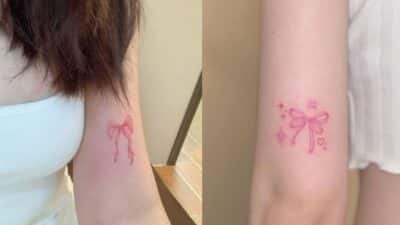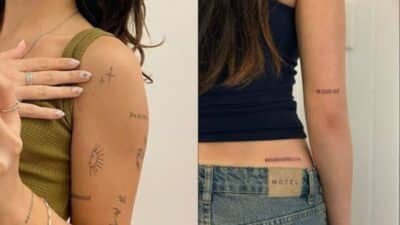Fine line tattoo catch the eye with their delicate and precise details. Unlike bold and thick designs, these tattoos use thin, clean lines to create subtle yet striking images. This style lets the skin show through more clearly, giving the tattoo a light and airy feel.

Fine line tattoos are defined by their thin lines and careful detail, making them a popular choice for elegant and simple body art. People often choose fine-line tattoos for their versatility, as they work well on many parts of the body and can range from small symbols to intricate artwork.
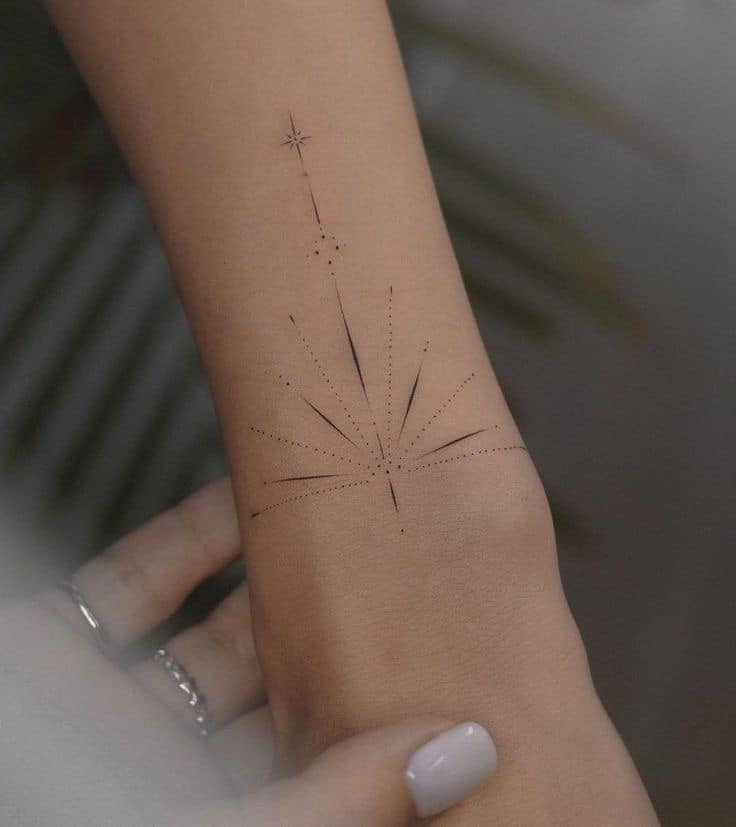
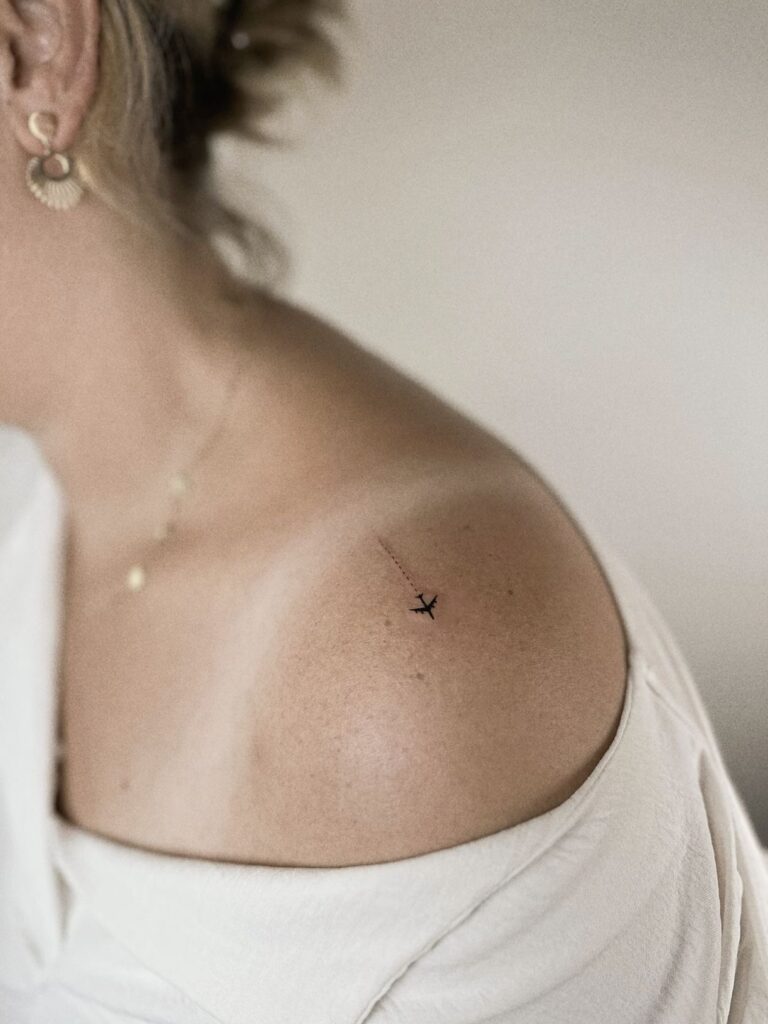
The skill of the tattoo artist plays a big role in how well fine line tattoos turn out. It takes steady hands and careful work to keep the lines crisp and clear. This style has become a favorite in modern tattoo culture because it blends artistry with a clean, fresh look.
Key Takeways
- Fine line tattoos use thin, clean lines for delicate designs.
- They fit well on many parts of the body and suit simple or detailed art.
- Skilled artists are key to creating sharp and clear fine-line tattoos.
What Is a Fine Line Tattoo?

Fine line tattoos use very thin, precise lines to create detailed and delicate images on the skin. These tattoos often look minimalist and focus on subtle designs rather than bold shapes or heavy shading. People choose fine line tattooing for its elegance and the way it highlights small, clear details in body art.
Defining Fine Line Tattooing
Fine line tattooing means using a single, very thin needle or a tight cluster of needles to create slender lines. The result is a delicate tattoo with sharp detail, often resembling fine drawing on paper. These tattoos tend to use minimal shading and no heavy black areas.


They are popular for minimalist tattoos and designs that require precision, like small symbols, text, or floral shapes. The skin shows more through the design, making the tattoo look light and airy. The focus is on clarity and subtlety rather than filling large spaces.
Because of their size and thin lines, fine line tattoos may fade faster than thicker tattoos. This requires careful aftercare and sometimes touch-ups to keep the design clear.
Fine Line vs Traditional Tattoo Styles
Traditional tattoos use thicker lines, solid black shading, and bold colors. These styles are often more visible from a distance and have a heavier, more rugged look. Fine line tattoos, by contrast, are subtle and detailed.
While traditional tattoos may cover larger areas, fine line tattoos work best for small or medium pieces. They emphasize delicate tattoos that look like artwork drawn directly on the skin.
Here is a comparison of key features:
| Feature | Fine Line Tattoo | Traditional Tattoo |
|---|---|---|
| Line Thickness | Very thin, precise | Thick and bold |
| Color Usage | Often black or muted tones | Bright, solid colors |
| Design Style | Minimalist, detailed | Bold, heavy shading |
| Visibility | Subtle, close-up viewing | Clear from far away |
| Longevity | May need touch-ups | Longer-lasting due to bold ink |
Fine line tattooing is a style that highlights precision and fine detail, offering an alternative to traditional, bold tattoo art. It suits people who want elegant and light body art with a focus on thin lines and simplicity.
Popular Fine Line Tattoo Designs

Fine line tattoos focus on clean, thin lines that create delicate and clear images. These tattoos vary from simple to detailed designs. They often use limited space and highlight creativity in small areas.
Minimalist Aesthetic
Minimalist fine line tattoos use very simple shapes and few details. This style often includes small symbols, geometric shapes, or single-line drawings.
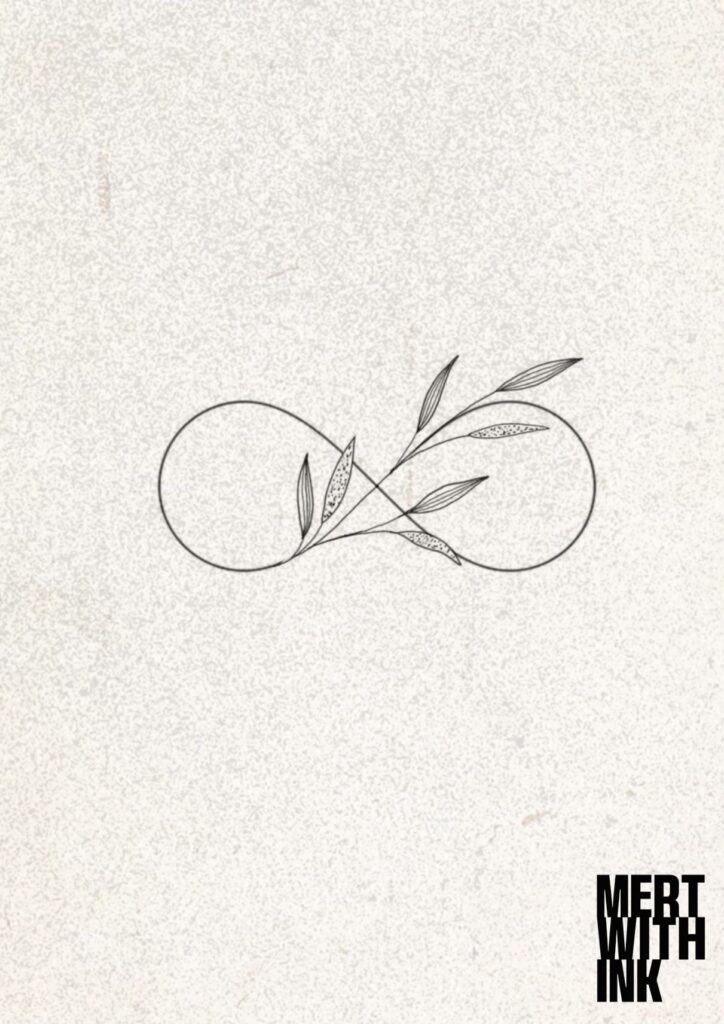
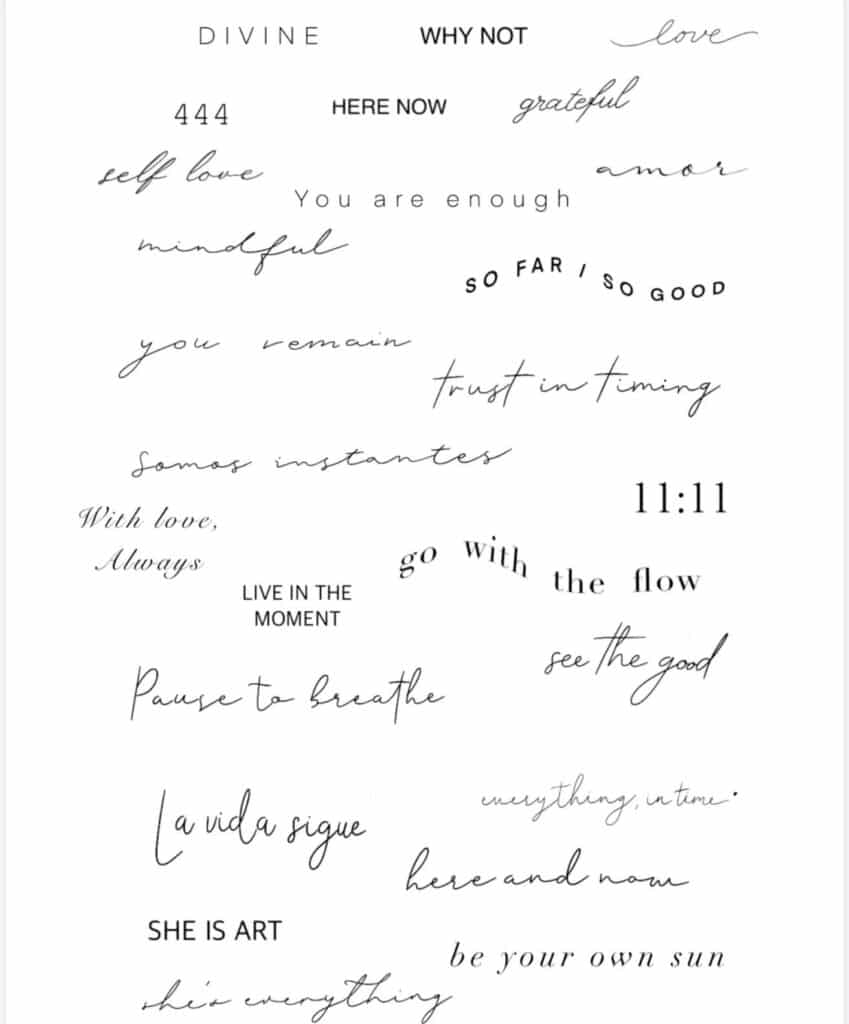
These tattoos are popular because they look clean and subtle. Many choose minimalist designs for their elegance and the ability to express an idea or feeling in a small space. The thin lines make the tattoo less noticeable but still meaningful.
Minimalist tattoos usually avoid heavy shading. They rely on precision and negative space to keep the design light. This approach suits first-time tattoo wearers or those who want a discreet look.
Intricate Designs
Intricate fine line tattoos use more detailed and complex line work. These designs can include patterns, nature-inspired images, or delicate portraits.
This style requires a skilled artist to create thin lines that hold detail over time without blurring. Intricate tattoos can appear like tiny sketches or drawings on the skin.
People choose intricate designs for their beauty and the way they mix fine art and tattooing. Such tattoos often show creativity through detailed elements like leaves, animals, or abstract shapes. The sharpness of the lines is key to keeping these designs clear.
Micro Tattoos

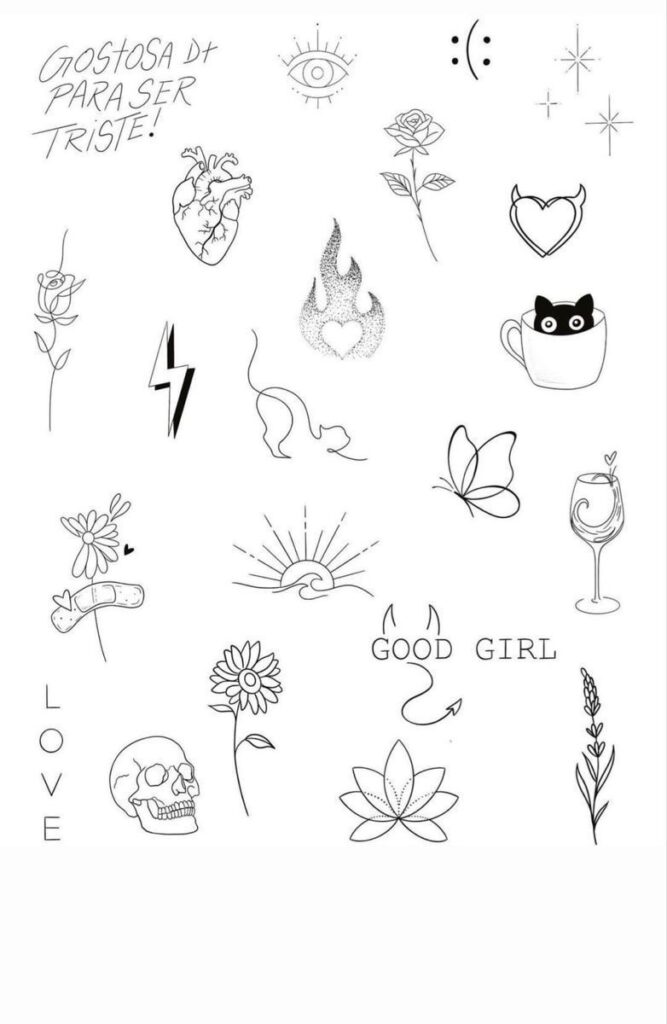
Micro tattoos are very small tattoos that fit into tight spaces on the body. They often use fine lines because the design must stay clear without crowding.
These tattoos can be symbols, words, or tiny pictures. Micro tattoos highlight precision and creativity in a small format.
Because of their size, micro tattoos tend to age well if done correctly. They require an artist who can work carefully with thin needles.
People like micro tattoos for their subtlety and flexibility. They work well on hands, fingers, behind ears, and other small areas.
Custom Designs
Custom fine line tattoos are unique designs made for the individual. Artists work with clients to create tattoos that fit personal ideas and styles.
Custom designs show a mix of creativity and skill. They can combine minimalist, intricate, or micro styles in one tattoo.
Clients often bring ideas from nature, culture, or art. The artist then adapts these ideas using fine lines to keep the tattoo both detailed and delicate.
Custom tattoos allow for personal expression with a focus on precision. The result is a tattoo that looks one-of-a-kind and suits the wearer’s personality.
Choosing a Fine Line Tattoo Artist

Finding the right fine line tattoo artist means looking closely at their skills and style. The process also involves clear talks before getting the tattoo. These steps help make sure the result matches what the tattoo enthusiast wants.
Qualities to Look For
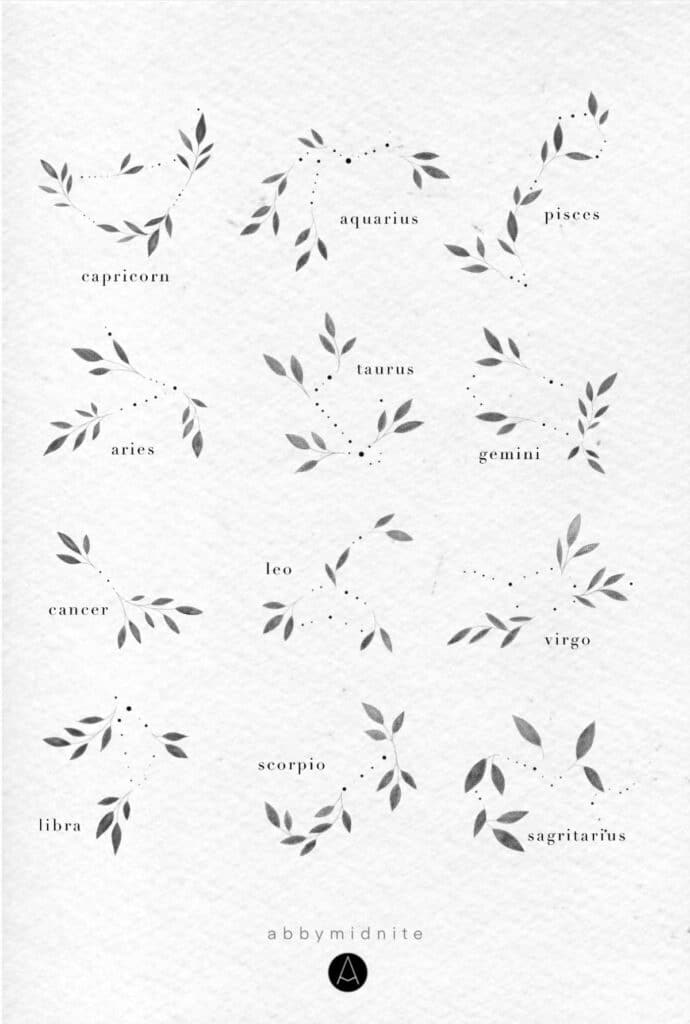

A fine line tattoo artist must have steady hands and great attention to detail. Their past work should show clean, thin lines that stay sharp over time. Tattoo enthusiasts should check portfolios for line consistency and clarity.
Experience in fine line tattoos is important since this style can fade or blur if not done well. The artist’s knowledge of skin types and healing also matters to avoid mistakes. Good artistry means balancing thin lines without losing image quality.
Trustworthy tattoo artists follow health rules and keep their tools clean. Positive reviews from clients show they respect safety and deliver good results. These qualities together make a tattoo artist a reliable choice.
Consultation Process
A clear consultation helps both tattoo artist and client understand the design and placement. The artist should listen to the enthusiast’s ideas and suggest adjustments for fine line work.
During the consultation, the artist explains how the tattoo will age and how thick the lines can be. They may show samples or sketches to make the design clearer. Tattoo artists also discuss costs and session length.
This meeting gives the client a chance to ask questions and express concerns. The right artist creates a space where the client feels confident before the tattoo begins. This step builds trust and helps avoid mistakes.
Body Placement and Versatility

Fine line tattoos work well on many parts of the body. They fit nicely in small or delicate spaces, making them good for subtle or detailed body art. The choice of placement affects how visible and lasting the tattoo will be.
Best Areas for Fine Line Tattoos
Fine line tattoos suit areas with smooth, flat skin. Common spots include the inner forearm, wrist, collarbone, and back of the neck. These places allow the thin lines to show clearly.


Because fine line tattoos rely on detail, areas with less movement and sun exposure help keep the design sharp. The ribs and upper thigh are also popular because they offer a flat canvas with less stretching.
Some artists avoid places where skin texture or body curves might blur fine lines, like joints or rough skin. Proper placement keeps the design clean and protects the delicate lines.
Tiny Tattoo Trends
Tiny tattoos often use fine lines to create small, clear images. They have grown popular for those who want body art that is discreet but personal.


Small tattoos work on fingers, behind the ear, or the ankle. These spots offer visible yet subtle designs. People choose tiny tattoos for first designs or to add little details around bigger tattoos.
Fine line style fits tiny tattoos well since it allows detailed images without heavy ink. This style creates sharp, elegant shapes that stand out despite their size.
Versatility of Fine Line Styles
Fine line tattoos come in many styles, from simple outlines to detailed botanical or geometric designs. They adapt well to many themes because the lines can be straight, curved, or delicate.
This tattoo style can blend with other art forms or be a standalone piece. It suits both black ink and soft colors. Artists often combine fine lines with shading or dot work for added depth.
Because of its precision, fine line tattooing works for both large and small tattoos. It fits tight spaces and large skin areas, making it flexible for many body art needs.
The Fine Line Tattoo Experience

Fine line tattoos focus on thin, delicate lines that require skill and care. These tattoos often involve detailed designs with a subtle look, which means the process and healing differ from traditional thicker tattoos. Tattoo enthusiasts should know what to expect during their session and how the healing process may feel.
What to Expect During Your Session


The artist uses a single needle or a very small group of needles for fine line tattoos. This creates thin, precise lines. Sessions may take less time than larger or shaded tattoos, but require steady, slow work for accuracy. The skin area chosen is usually small with little shading involved.
Clients should wear loose clothing to give the artist good access to the area. Keeping still is important so the lines stay clean. Fine line tattooing demands patience from both the artist and the person receiving the tattoo. After the session, the tattoo will look sharp but light, sometimes appearing faint until it fully heals.
Pain Levels and Healing
Fine line tattoos often hurt less than larger or heavily shaded tattoos because the needles do not penetrate as deeply or cover wide areas. Pain varies by body part and personal tolerance, but many describe it as mild discomfort or a scratching feeling.
Healing usually takes about two weeks. The tattoo may peel or flake gently, similar to a small scrape healing on skin. It is important to keep the area clean and moisturized. Avoid picking at scabs to prevent line damage. Because fine line tattoos rely on thin lines, proper aftercare helps keep the tattoo clear and sharp for a long time.
Fine Line Tattoo Aftercare

Proper care after getting a fine line tattoo helps keep the lines sharp and prevents damage. Taking the right steps early and maintaining the tattoo over time supports good healing and lasting detail.
Immediate Aftercare Instructions
Right after getting the tattoo, the skin will be sensitive and need protection. The tattoo artist usually covers the area with a clean wrap. This wrap should stay on for 2-4 hours to block dirt and germs.
Once the wrap is removed, gently wash the tattoo with mild soap and lukewarm water. Avoid scrubbing. Pat it dry with a clean towel or let it air dry. Apply a thin layer of a fragrance-free, tattoo-safe ointment to keep the skin moist.
Avoid soaking the tattoo in water like pools or baths for at least two weeks. Direct sunlight should be avoided to prevent fading and irritation. Wearing loose clothing over the tattoo can help stop rubbing and irritation during healing.
Long-Term Maintenance
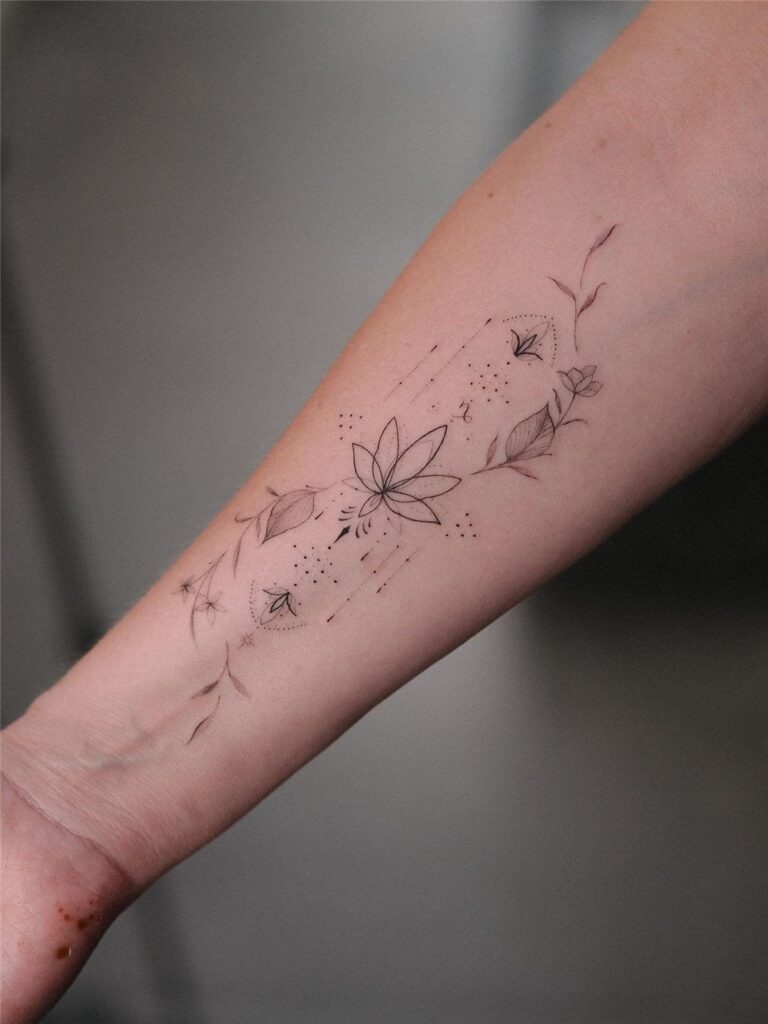

After the initial healing period, it’s important to keep the skin hydrated daily. Using a fragrance-free moisturizer will support skin health and prevent dryness, which helps keep fine lines clear.
Sun exposure will cause fading. Applying a high SPF sunscreen on healed tattoos when outside will protect the ink. Sunscreens with broad-spectrum protection work best.
Regularly inspecting the tattoo will help catch any changes or skin issues early. If any signs of infection or unusual reactions appear, consulting a doctor is advised.
Touch-Ups and Fading
Fine line tattoos are delicate and may lose sharpness over time. Fading happens naturally as skin ages and because of sun exposure.
Touch-ups can restore detail and color. Waiting until the tattoo is fully healed, usually after a few months, before a touch-up is important. Touch-ups should be done by a skilled artist familiar with fine line work to keep the original style.
Avoid heavy sun or chemical exposure to slow fading. Regular sun protection and moisturizing will extend the tattoo’s appearance before touch-ups are needed.
Fine Line Tattoos in Modern Body Art Culture

Fine line tattoos have grown in popularity because they use thin, delicate lines to create clear, detailed images. They blend artistic skill with precise technique, making them a unique part of tattoo art today. This style appeals to both artists and tattoo enthusiasts for its subtle beauty and versatility.
Influences and Trends


Fine line tattoos draw influenced from both traditional tattoo art and modern design trends. This style often focuses on black and gray ink, but sometimes uses soft colors to keep the look light and refined. Many tattooists skilled in fine line tattooing come from backgrounds in graphic design or fine art.
The rise of social media has also boosted fine line tattoos. Platforms like Instagram allow artists to share their detailed work widely, making this style more visible and desirable. Fine line tattoos often reflect minimalist themes, nature, and delicate shapes.
Fine Line Tattoos for Tattoo Enthusiasts

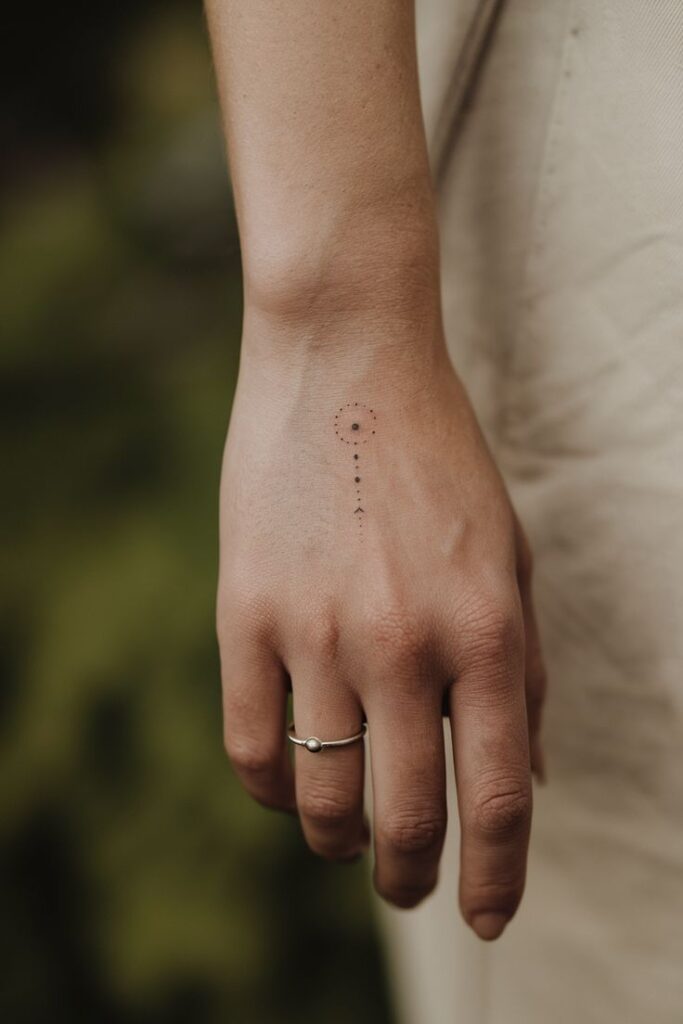
Tattoo enthusiasts choose fine line tattoos to get detailed but discreet body art. Because the lines are thin, these tattoos suit small or visible areas where bold designs might be too much. They also work well as first tattoos or additions to larger pieces.
The precision needed means tattooists must have steady hands and good control. Enthusiasts often look for artists experienced in fine line work to ensure the lines stay crisp over time. These tattoos also tend to age better if done correctly, keeping their detail longer than some bold styles.
- 11.4Kshares
- Facebook0
- Pinterest11.4K
- Twitter0

